#clothing reconstruction
Text



My most recent make is this ancient Minoan ensemble! It consists of a tunic (heanos) worn under a flounced wraparound skirt shaped like a double-bladed axe (labrys). Despite how heavy the linen skirt is, the entire outfit is surprisingly easy to move around in. I even waded into the river to rescue a bee!
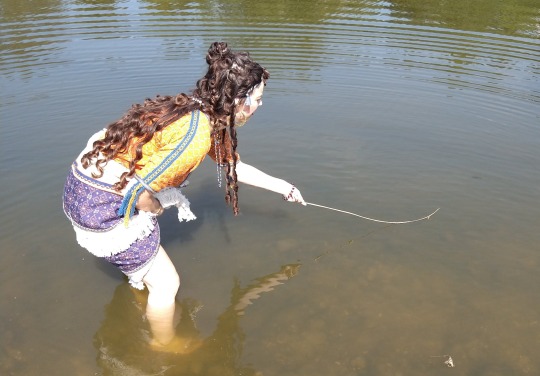
Hot Girl Activities
#minoan crete#minoan#ancient greece#greek mythology#historical costuming#bronze age#my costumes#clothing reconstruction#hot girl summer
5K notes
·
View notes
Text


Greg Lauren reconstructed snorkel parka
A/W 2017
193 notes
·
View notes
Text
The long history of the Egtved Girl's dress
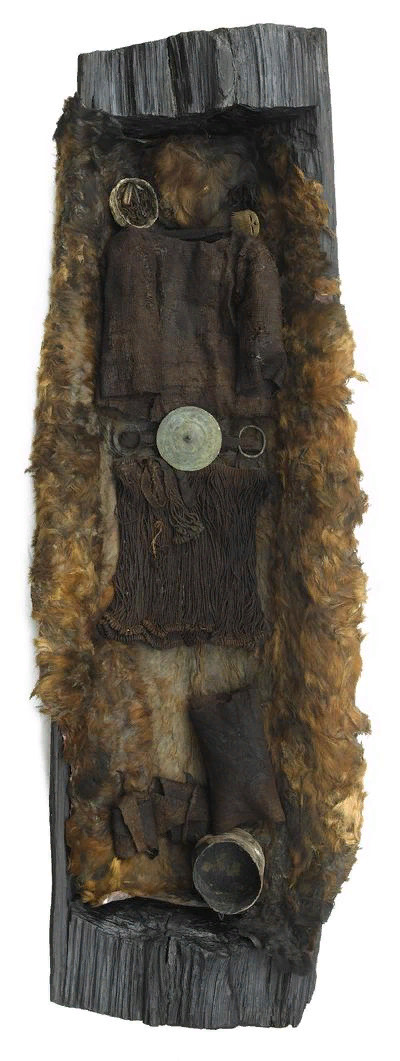

The Egtved Girl's burial (1370 BC) // The archaeologist's sketch after the excavation (1921)

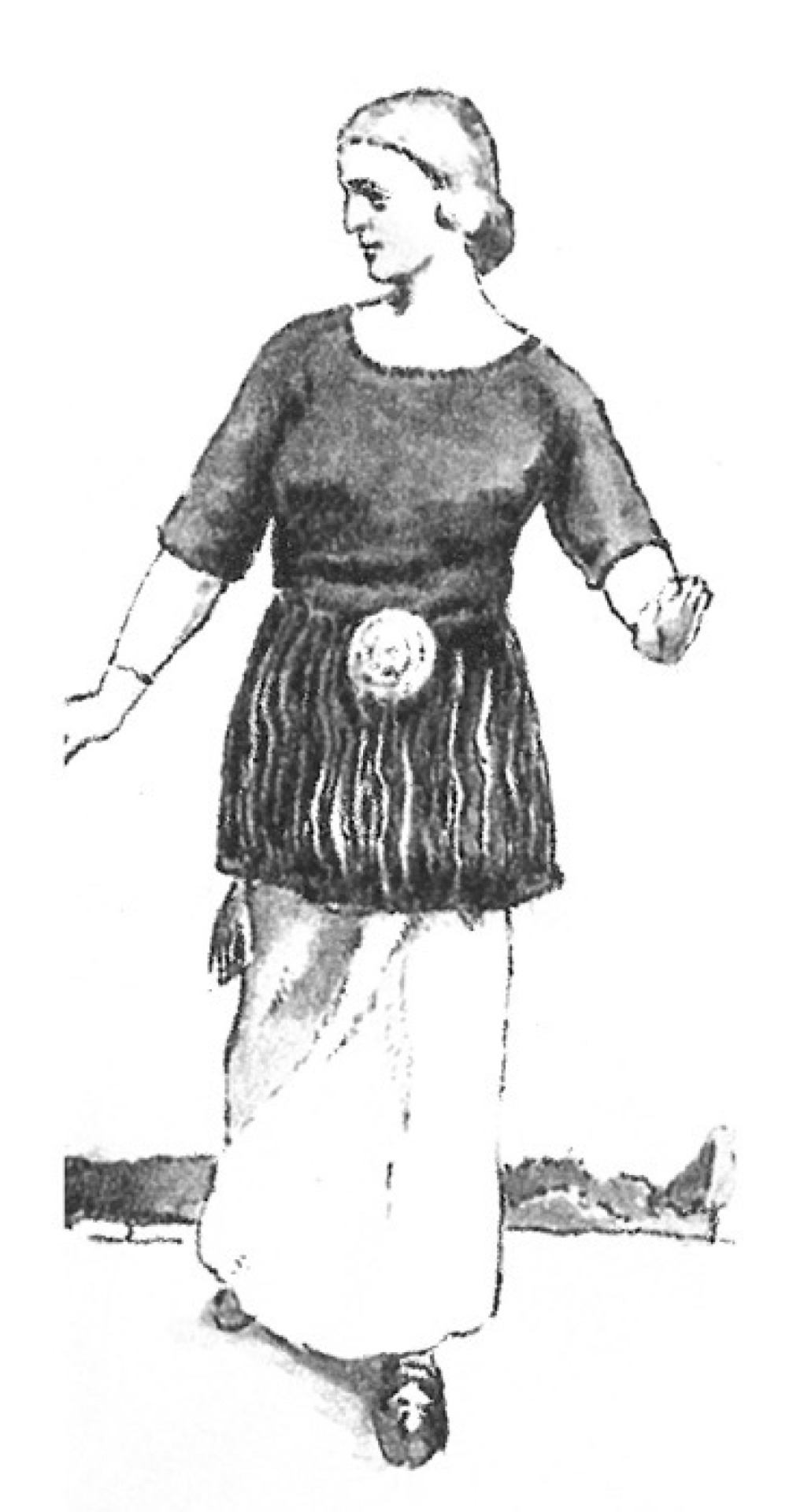
Lise Fenger. The first attempt at reconstruction of the dress (1938) // An illustration from "Das Kostüm Werk" by Wolfgang Bruhn, Max Tilke (1941)

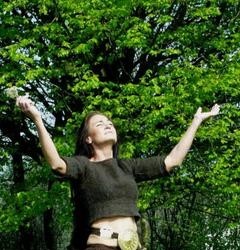
An illustration by Aage Sikker Hansen (1944) // Anni Brøgge performing a ritual dance, photo by Flemming Kaul (1999)

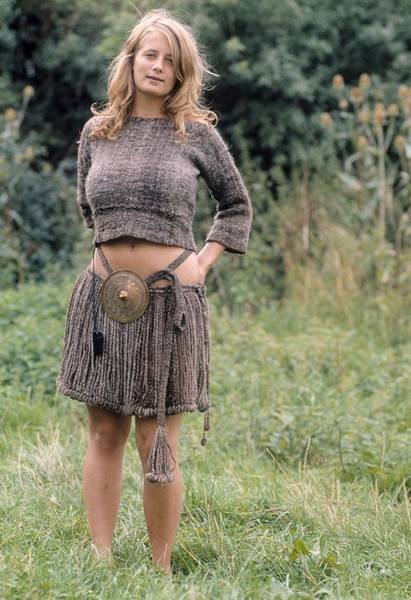
Modern reconstruction for the National Museum and Sagnlandet Lejre
Despite being preserved in almost perfect condition, the Egtved Girl's (c. 1390 – c. 1370 BC) clothes have been a controversial topic for an entire century. Because of how unexpectedly revealing (for our expectations) they look, these Bronze Age top and skirt's depictions have been repeatedly changed to be more "modest" and better fit the 20th century's sensibilities. Only by the end of the 1990s, Egtved Girl's clothes have been reconstructed accurately.
Sources:
The Egtved Girl
Spor fra Metallernes tid
Crop top er ikke nyt i Jylland
Bronze Age dance
#egtved girl#history#mummies#photography#art#illustration#clothes#fashion history#historical reconstruction#stereotypes#censorship#death#historiography#culture#prehistory#added some text for clarity#archaeology#my post
55 notes
·
View notes
Photo

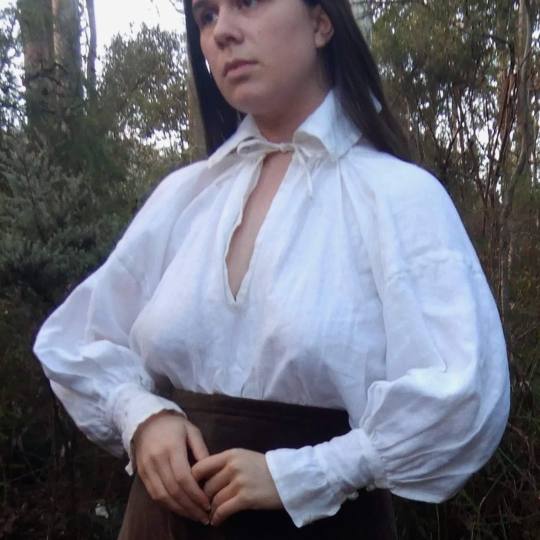
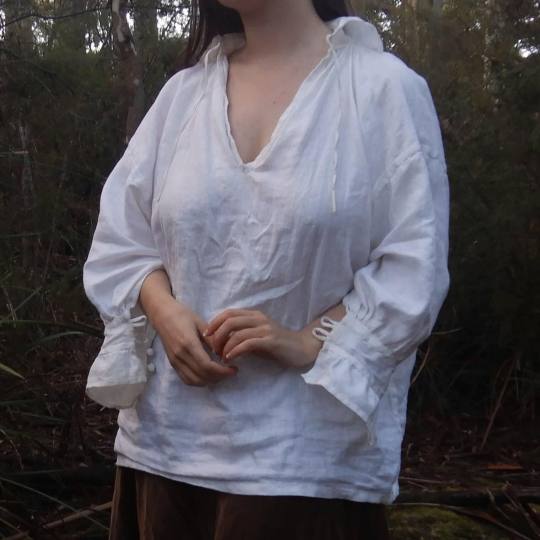
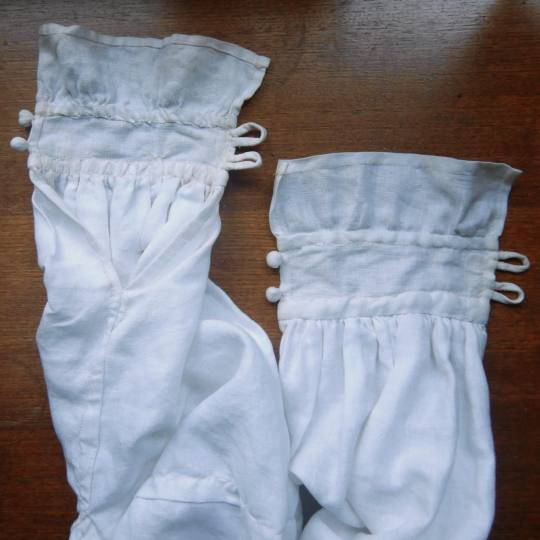
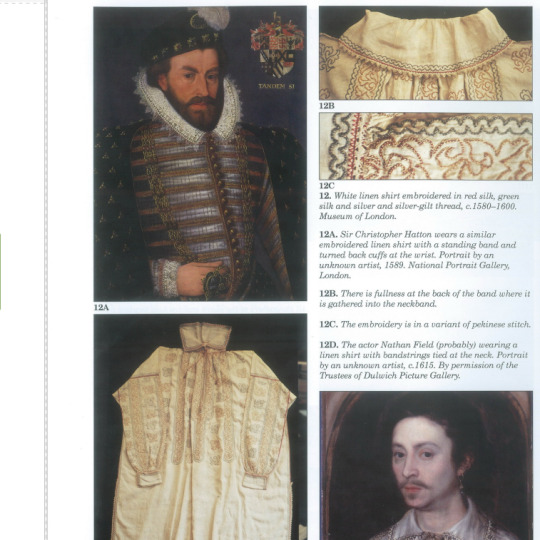
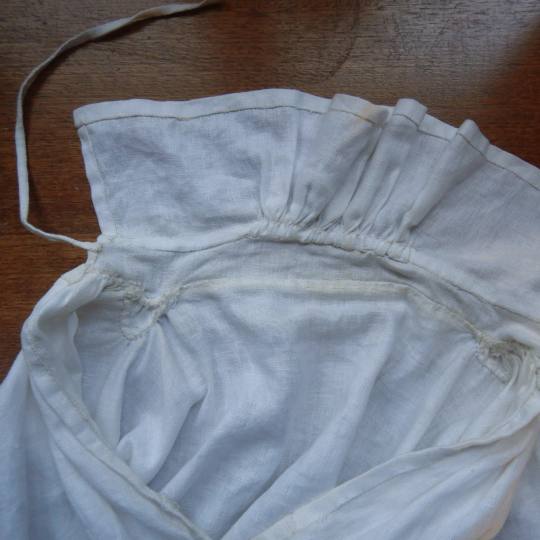
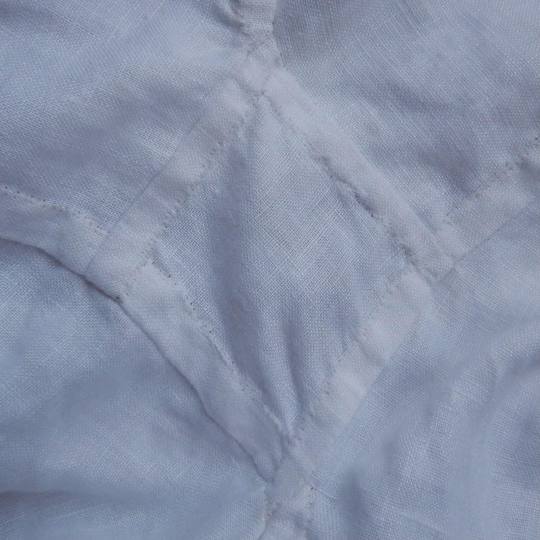


my first reconstruction garment, 1580-1600 mens shirt, linen and entirely handstitched. taken from patterns of fashion 4. i made it a year at least ago but never got around to taking proper photos. i would love to finish a late 1500s mens ensemble to go with it at some point.
#my shakespeare slay... my kit marlowe slay even#my sewing#historical reconstruction#historical costuming#historical fashion#sorry for taking photos when its not washed in my defence thatrs so hashtag historically accurate. because people wore clothes#1500s#16th century#1580s#1590s#my face
55 notes
·
View notes
Text
feels like im trying to rebuild my vibe after i lost my old one years ago. i want to figure out how to have fun being constructive again and how to try new things
#going to new places and trying new clothes and such#this 2024 im reconstructing my damn self#after like eight-ish years of being in survival mode
10 notes
·
View notes
Photo
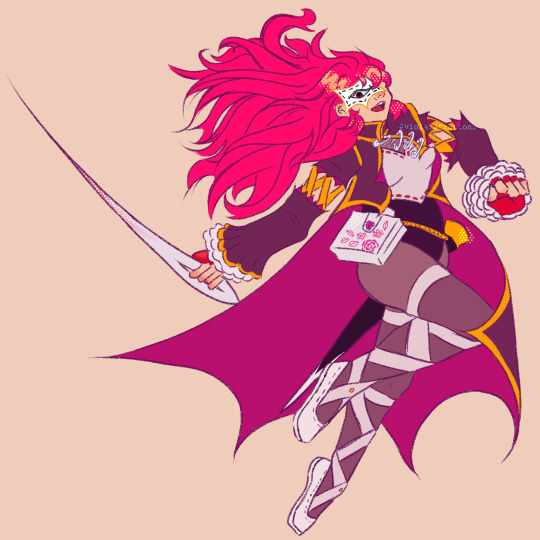
[ID: a digital drawing of Sumire Yoshizawa from persona 5 royal, leaping and posing with a needle-shaped sword. Her costume is redesigned: her hair is out and free flowing, her mask is white with a gold outline and outlined with black stitching, Her jacket is a dark purple and trimmed with gold on the outside and dark magenta on the inside. The buttons are replaced with safety pins, and her sleeves are detached as if ripped, held together with criss-crossing gold ribbon. The ends of her sleeves has copious amounts of white frills, and her red gloves are now fingerless. Her leotard is white at the top, resembling a heart, and is stitched on with red thread. A gold chain at her waist holds her black-and-gold sheath, and silver sewing kit adorned with pink roses. She’s wearing white pointe shoes, and the white ribbons are worn over black tights, criss-crossed all the way up to her knees. The artist’s signature is at her shoulder. End ID]
gave Sumire a second outfit, because it’s bullshit how she didn’t get one after her second awakening
#persona 5 royal#p5r#sumire yoshizawa#persona#art#decided to lean heavily into the whole tailoring/seamstress(?) theme#1) bcus cinderella has a whole thing with making clothes and dresses#2) deconstruction and reconstruction ! taking apart her old identity and reinventing it with flair#it was actually pretty fun to do ^^#persona 5 royal spoilers#p5r spoilers#nooty's art
64 notes
·
View notes
Note

do you want me to like. replace the part rui covered by robonene that was cut out. or is this good. sorry the image is bigger than it needs to be apple is a bitch and for some reason gets rid of the transparent parts if i try to crop it so yeah 👍
NONO THAT'S PERFECT!!!!! TY
#clothing reconstruction is a whole separate deal#literally do not even worry abt that I'll only be using like shoulders up for a discord pfp
7 notes
·
View notes
Note
Hi, I saw your slideshow about 14th century clothing and I wanted to ask about the cloak. I have trouble reading the diagram, but looking at the picture next to it, it looks like the cloak would have draped over one shoulder and been fastened at the other? Is that correct? And there's no real shaping to it, just a rectangle (or half circle)?
Hey! So the answer is yes, usually cloaks were fastened over the right shoulder, so as to leave the right arm free. Early period cloaks were often just a large rectangle, and then later on they became a half circle like the cloak in the diagram.
The diagram is depicting how a half circle cloak would have been pieced together out of several bits of fabric, as they wouldn’t have had wide enough fabric to conveniently make it out of one piece.
If you’re wanting to make one, the measurements are:
• from wrist to wrist
• from shoulder to how long you want it to hang (I recommend just below the knee as the longest. Mine goes to a bit above the knee)
Here’s a picture of mine (half circle), taken by Castleforge Photography :)

#ask#medieval reenactment#cloak#medieval clothing#it should be mentioned that this outfit as a whole is very higgildy-piggildy in terms of historical reference#and so probably shouldn’t be used as such#but isolated from the whole.. the cape and tunic are pretty good#(oh and the knife of course which is a beautiful reconstruction)
37 notes
·
View notes
Photo


#Russia#russian#russians#Russian women#art#russian photography#Russian style#russian traditions#historical clothing#russian clothers#historical reconstruction#kokoshnik
30 notes
·
View notes
Text
stopping for the night, but I just accidentally started working on my first costume, an upcycle of an old size 4X colorful suit that I never even got to wear, so if I fuck up there’s no harm done. im gonna have to basically reconstruct the ENTIRE goddamn thing. like taking in the sides, chest, shoulders (still keeping the ridiculous shoulder pads tho), arms, and back. like, significantly. AND I’ve gotta cut off half of it to look like this reference that im trying to recreate:
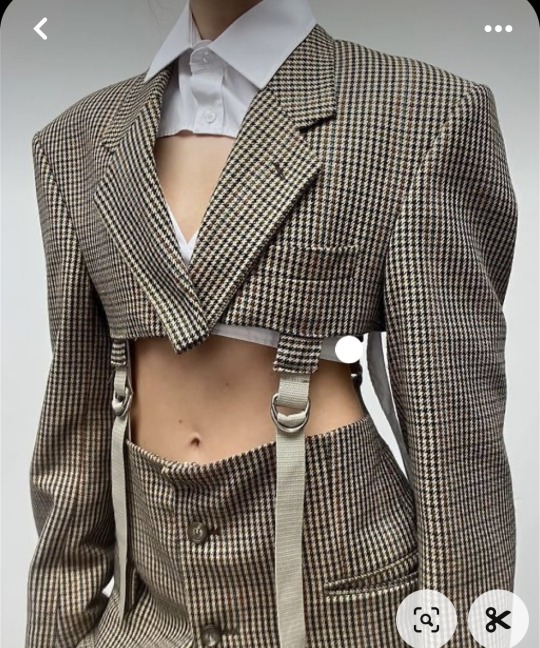
#when I say it’s massive on me I mean MASSIVE#like u could fit two of me in it#and im tiny as fuck now and have to deconstruct AND reconstruct the entire thing pretty much#have I ever done any major alterations on any piece of clothing ever? no#especially a whole ass suit? definitely not#im honestly expecting to fuck it up pretty bad#but I might surprise myself since im taking it slow#since I haven’t been contacted about any bookings yet#so im not putting a deadline on it#if it DOES come out rlly good then I’ll plan a number around it for my first booking#if I can pull this off then I can do ANYTHING#it would be a pretty damn big serve if I can pull this off#and I’ll impress everyone even more#realistically tho it’s probably not gonna be good enough to wear#but I have motivation and a dream. and sometimes that’s good enough
2 notes
·
View notes
Text
Minoan Heanos
The distinctive open-front dresses worn by Minoan women are probably even more iconic than the multi-layered kilts. Over time, there's dispute whether the garment is one piece or a separate bodice and skirt, but currently the one-piece theory is in ascendance.

The word heanos is derived from the Linear B logogram *146, wehanos. The wes- prefix, which is the squiggle in the middle, indicates a garment. Bernice Jones believes that this logogram represents the garment worn by Minoan men and women.
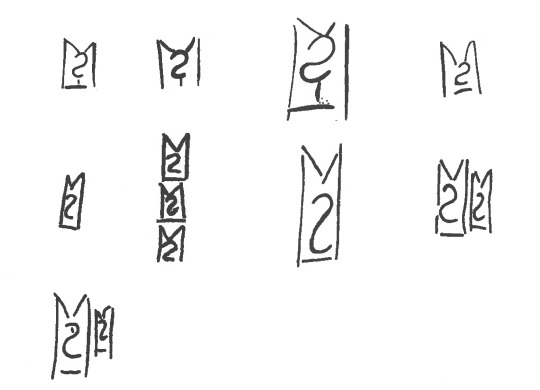
Marie-Louise B. Nosch, The Textile Logograms in the Linear B Tablets, pp 133-138
More research and construction below the cut:
The theory that the garment is a full-length tunic is further supported from imagery from the time, like these figures from the c. 1400 BCE Hagia Triada Sarcophagus. This detail from the sarcophagus shows three figures in some kind of procession, 2 women and 1 man. The woman at left wears a tunic with some kind of pelt as a skirt, and the other 2 figures wear tunics without anything over them, showing that they are one continuous, ankle-length garment.
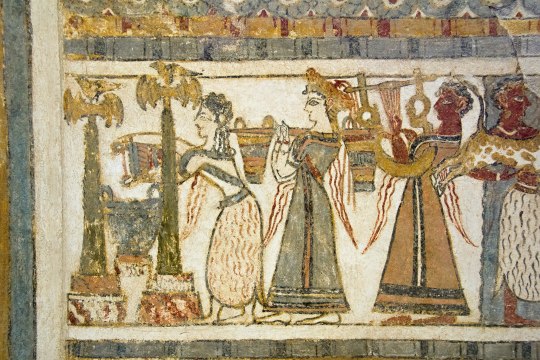
Some of the most important resources for interpreting how the heanos was constructed comes from the two women depicted in the House of the Ladies in Akrotiri, wherein the side seams of the tunic are clearly visible running along the side of the body and under the arm.
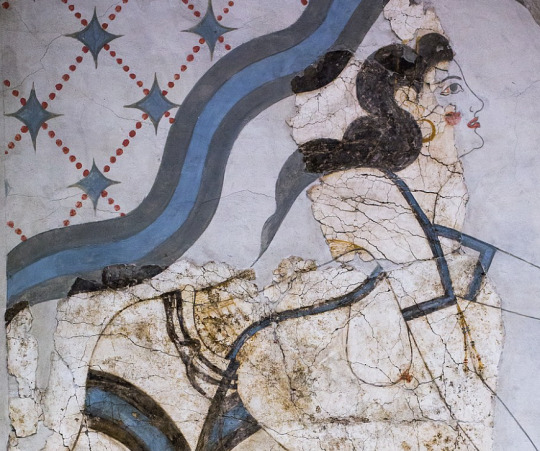
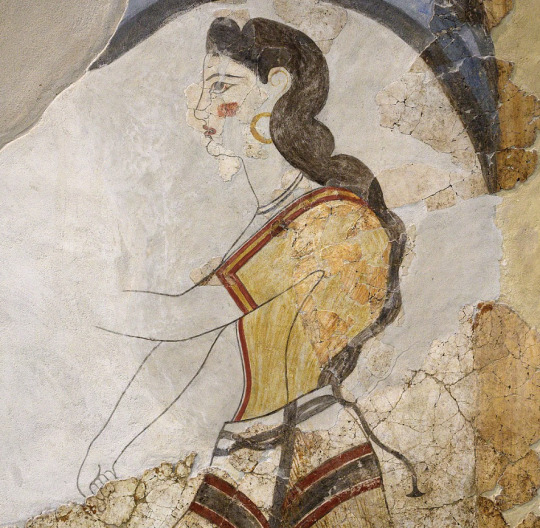
details of figures from the House of the Ladies, Akrotiri, via Wikimedia Commons
advadbsvasb
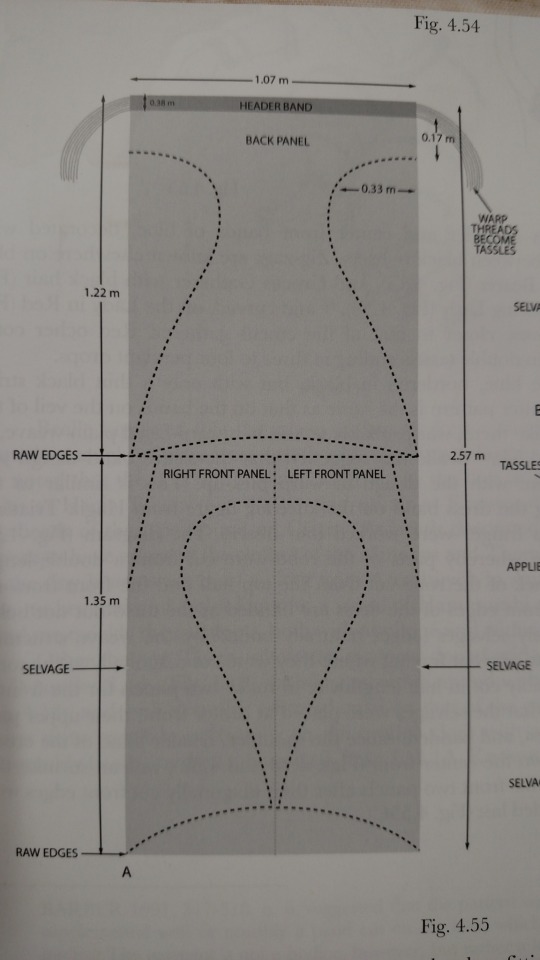

Diagrams from Bernice Jones' book Ariadne's Threads, p. 82, via Gorgeous Tangents
The heanos itself is made of 3 pieces of fabric: 1 back and 2 fronts. These diagrams show a concave hem like on the labrys-shaped kilt but I went with a straight hem, which is an equally valid option. The end of the sleeves are level with the edge of the hem at the widest point. This would probably be the width selvage-to-selvage on the fabric, being narrower than fabric widths commonly are today. There are 4 seams: the shoulder seam, the two side seams, and a front seam (optional, but recommended if you would prefer not being arrested.) It may be tempting to fold the fabric across the shoulder, so the only sewing is side seams and a neck hole, but this makes a weaker garment overall. I used this as a shortcut in my fitting muslin and it caused tears and weak points at the three points of the front opening.

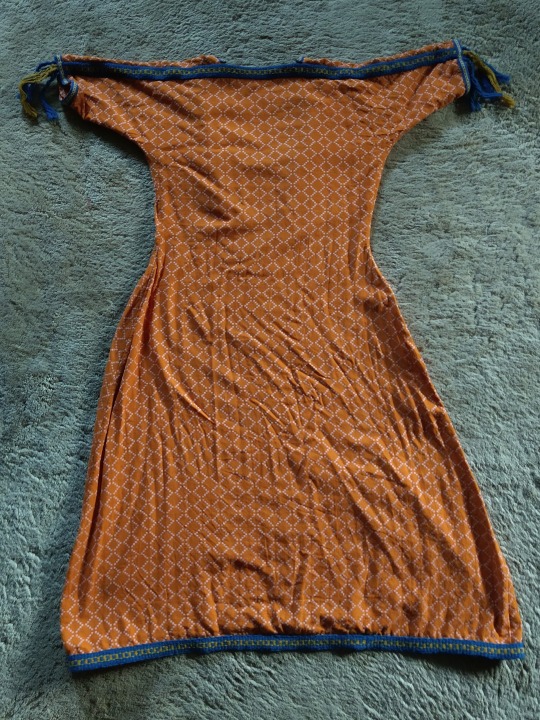
my fabric was a lightweight, moderately loose-woven cotton with a supplementary weave pattern in squares and diamonds. Linen or wool would have been more accurate but also? much harder to find from online quilting stores selling fabric for affordable prices. The main fabric is dark orange and the pattern is made out of pink/lilac threads. This weaving technique resulted in a LOT of long floats (unsecured expenses of thread) on the back--you can see how the wrong side of the fabric is much pinker than the right side. These floats could snag easily if I wasn't careful, so while it made a very effective visual for this tunic, I do not think that this fabric type would be viable for everyday wear. I'll leave it to people who actually know about weaving to ponder what more accurate weaving techniques would be.
Construction
The overall pattern is basically a T-shaped tunic, and the most important measurements are shoulder circumference, shoulder width, bust circumference, and the shoulder-waist length. In addition, you need measurements for the bicep, waist, shoulder-navel length, and hip circumference. After working out the fit with a muslin, I ended up with this pattern, 1 of 4 identical quarters.

Your first impulse may be to make the tunic very close-fitting, since the depictions in frescoes are skin-tight, but since the pattern has no added gusset this is a recipe for Cannot Move Arm. So I gave a very generous curve under the arm, which also made the dress look better when my arms were down, avoiding armpit wrinkles. I continued that ease into about an extra 2 inches added on to my waist measurement and plenty of extra space around my hips so that I could do exciting things like Sit Down.


I sewed the shoulder and side seams using the machine, and felled the raw edges on each side of the seam by hand with a whipstitch. I foided back the front edges of the v-neck instead of cutting them, which was a tip I got from the Gorgeous Tangents blog. This strengthens the neckline and keeps it from stretching, and also means that everything can be readjusted if you have size fluctuations or just want to modify the tunic into something more or less modest.
I whipstitched the front edges together by hand--the contrasting selvage didn't matter because it would be covered up by trim. I ended up cutting the tunic a liiiittle shorter than I wanted, so I finished it with some leftover bias binding instead of hemming it to conserve as much length as possible.
Trim

I custom-ordered the woven tape trim from Long Creek Mercantile. Both are made of wool--the "header band" and the hem trim are 1 1/4" wide and the center-front and cuff trim are 3/8" wide. I observed that most images of the Minoan heanos show trim with two colors at most, in a simple geometric or linear pattern, so I consciously restrained myself from ordering anything more elaborate. The clothing on Minoan frescoes is characterized by strongly contrasting colors, so blue trim was the most obvious, and best-looking option. Orange tunics with blue trim appear multiple time in art like the "Dancing Lady" fresco from Knossos:

Dr. Jones suggests that the band across the shoulder would historically have been a header band--a band of threads woven at the beginning of a project in order to properly space the warp bands (see her diagram at the beginning). That may be a reason why the shoulder trim often depicted under the front or sleeve trim, as shown above. Regardless, the trim almost always coordinates.
I sewed on the shoulder trim by hand, the sleeve and hem trim by machine, and the center-front trim with a combination of both.
Tassels
Many frescoes from Akrotiri and Hagia Triada show the ends of the supposed header band turned into tassels. This embellishment is not universal among heanoi, as you can see from the "Dancing Lady" above, but it does add a fun little something!

(yes, my Lounging Pants are very fashionable)
I turned the excess ends of the shoulder "header band" trim into fringes, knotting the yellow ones into a lattice and turning the blue yarns into tassels. The lattice-tassel appears on a fresco from Hagia Triada:

Reproduction of fragmentary fresco from Room 14 at Hagia Triada, Crete
The saffron gatherers from Akrotiri shown below have clearly displayed fringes at the ends of their sleeves. The one on the left has red fringes that appear knotted or ravelled/unravelled in an undulating pattern, and the one on the right has fringes that may be either beaded with papyrus-shaped leaves or cut into short tassels.
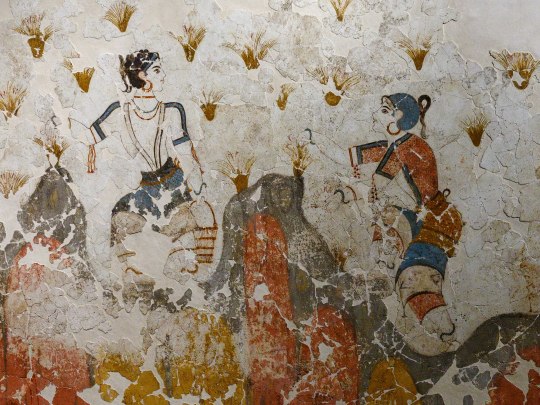
Another option is leaving the fringes loose, as seen in the Akrotiri frescoes from Xeste, room 3:
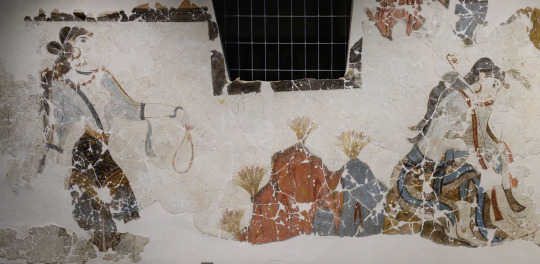
The final garment was super comfy, actually! It's much simpler to create than I thought it would be based on the frescoes, which made it all feel pretty magical when everything came together. I did think it was a little unusual how tailored this garment is, and the potential waste of fabric that comes from a shaped garment, especially compared to how later ancient greek clothing was mainly rectangles. I don't know enough about bronze-age and earlier clothing to have any idea how typical this was, since I'm extremely Not an expert on this subject, but am always open to learning more!
477 notes
·
View notes
Text
Made an 1890s cape on impulse

Based on the Truly Victorian pattern TV590
#victorian clothing#victorian#belle epoque#historical fashion#sewing#Edwardian#I actually find it to be quite simple#I hated it at first but i kinda like it now#cape#more like a capelet#historical clothing#historical reconstruction#fashion#1890s#19th century#still needs a good ironing and some closures
84 notes
·
View notes
Text
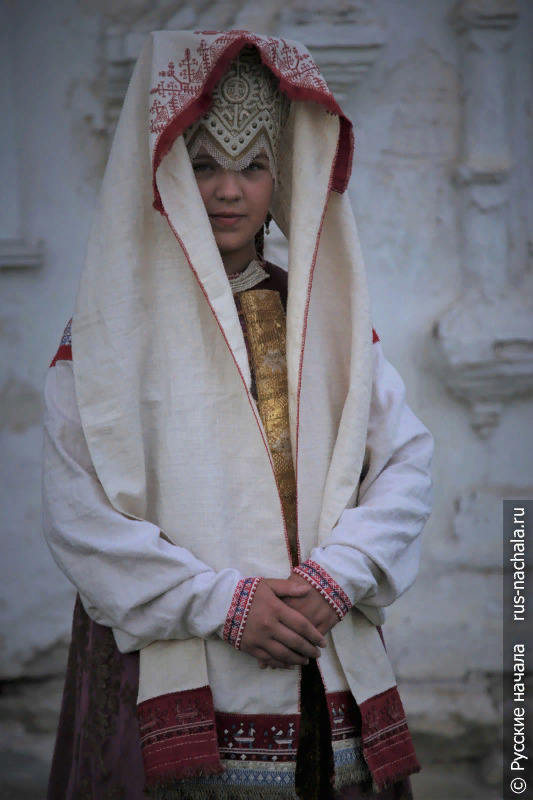





Традиционный девичий праздничный костюм Каргополья конца XVIII — начала XIX вв. | Traditional maiden's festive costume of Kargopol of the late 18th - early 19th centuries. (x)
#traditional clothing#fashion history#headdress#russian clothing#embroidery#fiber arts#jewellery#accessories#my post#historical reconstruction#18th century#19th century#russia#russian north
5 notes
·
View notes
Text
considering followup projects; I have some different fabrics I wanna work with. currently thinking I'll start off making a work blouse with oatmeal linen, something like these examples from the Merchant Tailor Museum:


albeit one with a rectangular body and off-the-shoulder gathered sleeve, so that I don't have to worry about drafting a curve for the armscye (I've seen examples of work blouses with sleeves like that in ambrotypes and daguerreotypes.) so it will be a bit of a weird cross between features from different examples of the same kind of garment, but certainly still nothing beyond imagining.
#also i think it'll be fun making something a little more pedestrian than the usual historical clothing reconstruction fare#like don't get me wrong. when i feel my skills are there im absolutely gonna make a double breasted frock coat in navy blue broadcloth#and i have some linens already for a striped waistcoat and checked pants in wonderfully garish shades#to satisfy my inner flâneur#but it'll be handy to have some lighter working-class clothes as well#sewing projects
3 notes
·
View notes
Note

if you ever wondered what dandelion’s outfit would look like broken down into pattern pieces here it is !! :D
YES I HAVE ALWAYS WONDERED THIS!!!!!!! So. Freaking. Cool.

#a fairy is born every time someone puts together patterns for reconstructions of historical clothing#bonus fairy is born when it’s The Witcher
5 notes
·
View notes
Text
this barbie got scolded by her mom for wanting to leave the house in a summer dress in the middle of winter to go see the barbie movie
#she's given me some of her pink clothes to make up for it#we'll see how i reconstruct the fit#zyan ted talks
4 notes
·
View notes